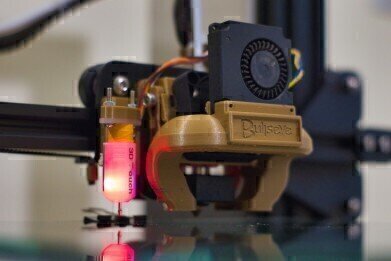News & Views
What is 3D Bio-Printing?
Jun 17 2015
3D bio-printing is the revolutionary new technology which could completely alter the way we approach surgery, pharmaceutical testing and regenerative therapy. Though successful bio-printed prototypes are yet to materialise, the end goal of such a discipline is to structure a 3D working model of human tissue and organs and use real DNA as the “ink” in this complex printing operation, thus artificially creating a natural organ.
Possible Uses of 3D Bio-Printing
A regenerative medicinal company named Organovo, who are based in San Diego, were the first to pioneer the technique of 3D bio-printing in the commercial sphere. The company have already successfully manufactured samples of human tissue and are looking at consistently producing organs, culture plates and other structures which will be available to be used in a variety of applications, including the following:
- Preparation and rehearsal of delicate and vital surgical operations.
- Transplantation of healthy (artificial) tissue for diseased or decaying tissue.
- Use in cosmetic surgery, such as facial modelling
- Replacement of severed or damaged body parts
- Drug testing, which will eradicate the need for animal testing and simultaneously produce more finely-honed drugs which can cater specifically to the needs and constraints of the human body.
- Improvement of durability, resistance and performance of traditional human tissue
- Maximisation of nutritional distribution from food intake
Clearly, the potential benefits of this process are as exciting as they are numerous. However, before such a technique can become widely available, a few problems must be surmounted.
Spanners in the Works
Up until now, scientists have had a difficult time in producing tissue that is hardy enough to withstand the rigorous procedures performed upon it during the printing process, yet still replicating the behaviour and structural makeup of human tissue.
Specifically, the billions of individual cells needed to make up an authentic piece of human tissue has been a stumbling block, as well as the ability of these cells to work in harmony with each other – which is vital to ensure the body distributes oxygen and blood in an even manner and excretes unwanted material.
Meanwhile, many techniques up until now have been rather unpredictable, making controlling them with foreseeable results a difficult endeavour.
Light at the End of the Tunnel?
Recent developments at Heriot Watt University in Edinburgh, Scotland, in the field of miniature VHS solenoid valves have shown promising signs for the future of the field. In several controlled studies, the bio-printers at the institute have been shown to produce highly viable samples of human tissue, which could prove to be a breakthrough in the history of 3D bio-printing.
Moreover, Organovo’s innovative methods of replicating the tissue that will constitute the bio-ink in future materials are advancing at an encouraging rate. Though many safety protocols and regulatory clearances are still required to be met before the practice becomes commercially available to the general populace, such an eventuality is not unthinkable in the foreseeable future.
Digital Edition
LMUK 49.7 Nov 2024
November 2024
News - Research & Events News - News & Views Articles - They’re burning the labs... Spotlight Features - Incubators, Freezers & Cooling Equipment - Pumps, Valves & Liquid Hand...
View all digital editions
Events
Nov 18 2024 Shanghai, China
Nov 20 2024 Karachi, Pakistan
Nov 27 2024 Istanbul, Turkey
Jan 22 2025 Tokyo, Japan
Jan 22 2025 Birmingham, UK




.jpg)














